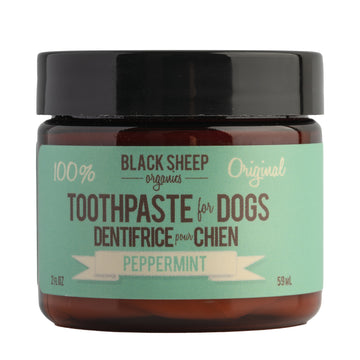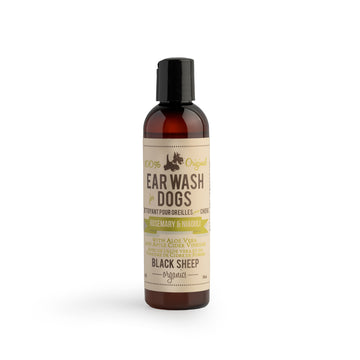Is your dog nursing a wound? Knowing how to clean it properly is crucial for a speedy recovery. In this post, we'll guide you through the essential steps, from preparing the wound to applying a bandage. We'll also discuss signs to watch for and when to seek professional veterinary care. Let's ensure your furry friend gets the care they need.
Understanding Dog Wounds
When it comes to caring for your dog, understanding different types of wounds is crucial. Here's a simple breakdown to help you identify and manage wounds effectively.
Types of Dog Wounds
- Cuts and Abrasions
- Cuts (Lacerations): These are jagged tears in the skin, often caused by sharp objects. They may involve torn fur and can be accompanied by swelling or bruising.
- Abrasions: These involve superficial damage to the skin, similar to a scrape. They are less severe but should still be monitored for signs of infection.
- Puncture Wounds
- Typically small on the surface but can be deep, puncture wounds are caused by sharp objects piercing the skin. They are prone to infections and may require professional medical attention.
- Bite Wounds
- Often more serious than they appear, bite wounds can introduce bacteria deep into the tissue. Immediate veterinary care is recommended due to the risk of infection and potential hidden damage.
Signs That a Wound Needs Medical Attention
- Persistent Bleeding: If the bleeding doesn’t stop after applying pressure for ten minutes, seek veterinary assistance.
- Deep or Large Wounds: Any wound that penetrates deeply into the tissue or covers a large area should be examined by a vet.
- Signs of Infection: Redness, swelling, warmth, pus, or a foul odor around the wound are indicators of infection.
- Changes in Behavior: If your dog shows signs of pain, lethargy, or an unwillingness to move, consult a vet.
- Foreign Objects in the Wound: If there are embedded objects that cannot be safely removed, professional help is necessary.
Preparing to Clean the Wound
Cleaning your dog's wound properly is essential for promoting healing and preventing infection. Let's go through the steps to ensure you're ready and your dog remains comfortable throughout the process.
Gathering Necessary Supplies
Before you start, make sure you have all the right supplies on hand:
- Gloves: Essential for maintaining hygiene and protecting yourself from any bacteria.
- Antiseptic Wash: Choose a pet-safe antiseptic to gently clean the wound without causing irritation.
- Clean Cloths or Gauze: Use these to apply the antiseptic and to dry the area afterward.
- Tweezers: Useful for removing any debris from the wound.
- Bandages: Depending on the wound's location and severity, you might need a bandage to protect it. Make sure to use an appropriate size and type for your dog's wound.
- Treats: It's always good to have some treats on hand to reward your dog for being patient during the cleaning process.
Creating a Calm Environment
A calm environment is just as important as the supplies you gather. Here’s how you can help your dog stay relaxed:
- Choose a Quiet Space: Find a quiet area where your dog feels safe and secure. This can be a familiar spot in your home.
- Speak Soothingly: Use a calm tone of voice to reassure your pet. Your demeanor can greatly influence how your dog reacts.
- Use Treats or Toys: If your dog is particularly anxious, having their favorite treat or toy on hand can offer a comforting distraction.
- Take Breaks: If your dog becomes restless, take short breaks to let them relax before continuing.
Can I Clean a Dog's Wound with Alcohol?
You might wonder if alcohol is a suitable option for cleaning your dog's wound. However, the answer is no. Here's why it's not recommended and what you can use instead.
Why Alcohol Is Not Recommended?
- Irritation: Alcohol can cause a stinging sensation, which is uncomfortable for dogs and may lead to increased stress and resistance during wound care.
- Delayed Healing: Alcohol tends to dry out skin tissues, potentially delaying the healing process.
- Tissue Damage: The harshness of alcohol can damage sensitive skin tissues, making the wound more susceptible to infections.
Alternatives to Alcohol for Cleaning Wounds
- Mild Soap and Water
- This is the most gentle and effective method.
- Saline Solution
- A simple mix of salt and water can also be effective for rinsing wounds.
- Pet-Safe Antiseptic Solutions
- Look for antiseptics specifically formulated for pets.
- Hydrogel
- Apply a hydrogel designed for pets to maintain moisture and protect the wound environment, promoting faster healing.
How to Disinfect a Dog Wound at Home?
Properly disinfecting your dog's wound at home is crucial for preventing infection and promoting healing. Follow this straightforward guide to ensure your furry friend's recovery is smooth and swift.
- Gather Your Supplies
- We have listed the recommended supplies for cleaning wounds above. Make sure to have them on hand before starting.
- Gently Wash with Mild Soap and Water
- Start by washing your hands thoroughly.
- Wet the wound area with lukewarm water.
- Apply a small amount of mild, pet-safe soap to your hands or a soft cloth.
- Gently clean around the wound, removing dirt and debris without scrubbing.
- Rinse thoroughly with lukewarm water to ensure all soap residue is removed.
- Use a Pet-Safe Antiseptic Solution
- Pat the area dry with a clean cloth or gauze.
- Apply a pet-safe antiseptic solution like chlorhexidine or povidone-iodine. These solutions help disinfect the wound without irritating your dog's skin.
- Follow the instructions on the antiseptic product for the correct application method and duration.
- Properly Dry the Wound
- Use a clean towel to gently pat the wound dry. Avoid rubbing, as this can cause irritation.
- If necessary, use a hairdryer on a cool setting to ensure the area is thoroughly dry. Keep the dryer at a safe distance to avoid discomfort.
Should You Let Dogs Clean Their Wounds?
It's natural to wonder if you should allow your dog to lick their wounds, given that this is an instinctive behavior. However, understanding the balance between their instincts and potential risks is essential to ensure proper healing.
Natural Instincts vs. Potential Risks
- Natural Instincts: Dogs often lick their wounds as a way to clean themselves. Their saliva contains enzymes that can help combat some bacteria.
- Potential Risks: Despite these instincts, licking can introduce more bacteria into the wound, increasing the risk of infection. Additionally, excessive licking can lead to irritation and delayed healing.
How Licking Can Affect the Healing Process?
- Infection Risk: The mouth is home to numerous bacteria, which can be harmful if introduced into an open wound.
- Delayed Healing: Persistent licking can break down the wound edges, preventing it from closing and healing properly.
- Irritation: Continuous moisture from licking can cause skin irritation and inflammation, complicating the recovery.
Alternatives to Prevent Licking
To ensure your dog’s wound heals correctly, it’s important to prevent them from licking. Here are some practical solutions:
- Cones (Elizabethan Collars): Often referred to as "cones of shame," these collars are effective in preventing your dog from reaching their wound.
- Wraps or Bandages: Covering the wound with a sterile wrap can protect it from licking. Ensure the wrap is not too tight and allows for proper air circulation.
- Bitter Sprays: Some pet stores offer sprays with a bitter taste to deter licking. Always check with your vet before application to ensure it’s suitable for your dog's wound.
Aftercare and Monitoring
Proper aftercare is essential to ensure your dog's wound heals effectively and without complications. Here's how you can monitor the recovery and know when additional veterinary care might be necessary.
Signs of Infection to Watch For
- Redness and Swelling: If the area around the wound becomes increasingly red or swollen, it could be a sign of infection.
- Discharge: Be alert for any pus or unusual discharge, which indicates that healing isn't progressing as expected.
- Odor: A strong or unpleasant smell coming from the wound often signifies an infection.
- Pain or Sensitivity: If your dog shows signs of discomfort when the area is touched, it might be time to inspect more closely.
- Fever or Lethargy: Unusual tiredness or a fever can be systemic signs of an infection.
How Often Should Wounds Be Checked and Cleaned?
- Daily Inspection: Check the wound at least once a day to monitor healing progress. Early detection of issues can prevent complications.
- Cleaning Routine: Depending on the vet's recommendations, clean the wound once or twice daily. Use a gentle approach to avoid disrupting the healing tissue.
When to Seek Veterinary Advice?
- Persistent Symptoms: If redness, swelling, or discharge continues for more than a couple of days, it's a good idea to consult your vet.
- Worsening Condition: Any increase in the severity of symptoms is a clear indicator that professional help is needed.
- General Health Concerns: If your dog appears unwell in general, such as showing signs of lethargy or not eating, contact your veterinarian.
Proper wound care is vital for your dog's well-being. By understanding the cleaning process and knowing when to seek veterinary advice, you can provide the best care for your furry friend. Remember to gather the right supplies, avoid letting your dog lick the wound, and monitor for signs of infection. With consistent attention and gentle handling, your dog will be on the path to healing in no time.
Disclaimer: This blog post only provides tips on pet wound care and is not intended to be medical advice. Please consult your veterinarian for professional medical advice.










